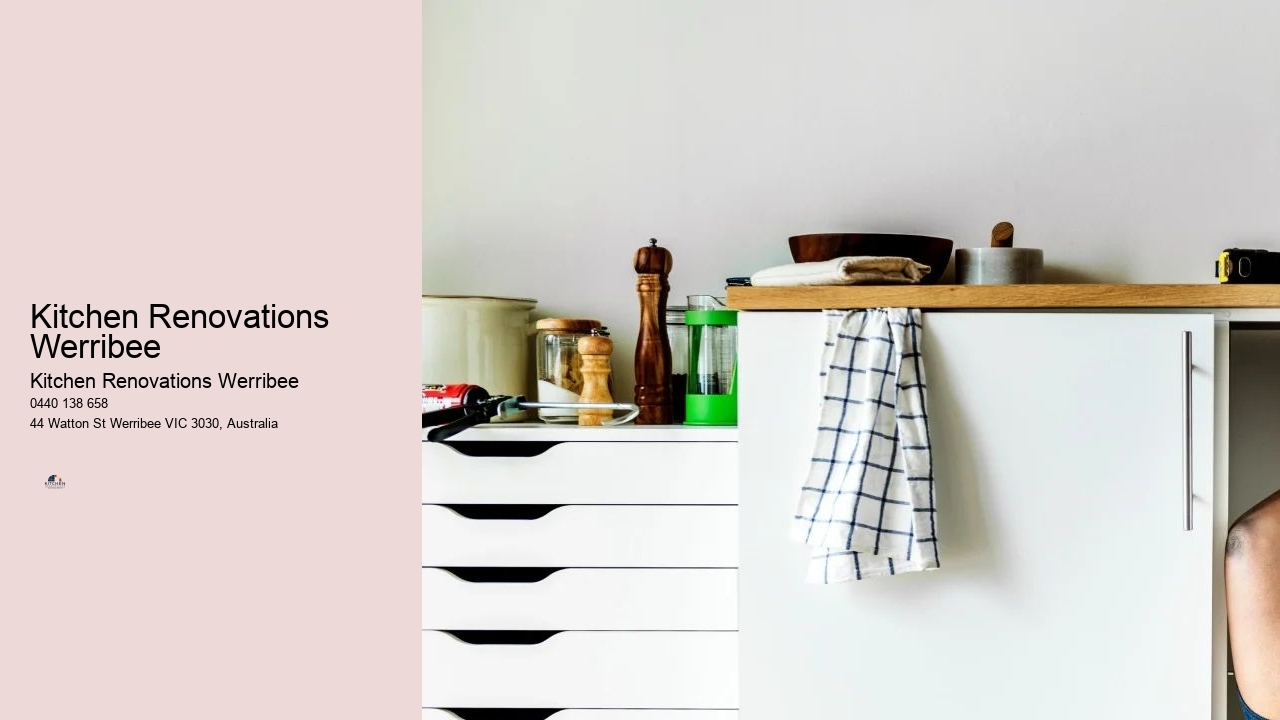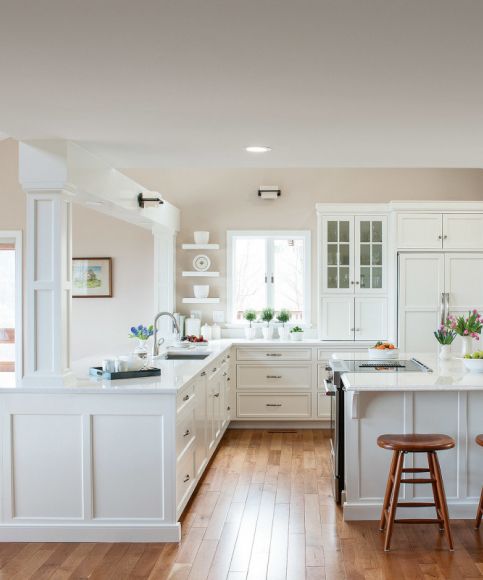

Werribee’s Reliable Kitchen Renovation Experts
Remodelling your kitchen shouldn’t be stressful. With years of experience, our team offers a seamless renovation process—from concept to installation. We combine innovation, precision, and efficiency to deliver elegant and functional kitchens that suit your lifestyle.
Kitchen Renovation Werribee
The kitchen is the heart of your home—make it a space you love. Whether you're after a sleek modern upgrade or a complete transformation, we deliver stunning kitchen renovations tailored to your style and budget.
Why Werribee Homeowners Trust Us
• Local Experts – We understand Werribee homes and design kitchens that reflect the local character.
• High-Quality Materials – Only premium materials are used to ensure lasting beauty and durability.
• Transparent Pricing – Clear, upfront quotes with no hidden costs.
• Custom Design – Tailored solutions to match your vision and renovation budget.
Our Services
Full Kitchen Renovations
Transform your kitchen with new layouts, cabinetry, countertops, splashbacks, and appliances. Our designs enhance functionality while increasing your home’s value.
Custom Cabinets and Joinery
Maximise space and style with custom cabinetry. Our expert joinery ensures every inch of your kitchen is used efficiently and beautifully.
Benchtop Installation and Upgrades
Upgrade to premium benchtops in stone, laminate, or stainless steel. Our installations deliver long-lasting durability and refined aesthetics.
Small Kitchen Renovations
No kitchen is too small. We specialise in compact designs with clever storage, multi-functional layouts, and space-saving solutions—perfect for smaller homes or budgets.
Before selecting the perfect cabinets for your space, it’s essential to understand the overarching aesthetic of your home. Whether it's a cozy cottage vibe, a sleek modern look, or an eclectic mix, the architecture and existing decor will guide your choices. Pay attention to elements like trim work, flooring, and color schemes as these will play significant roles in aligning new cabinetry with your home's style. Observe how natural light interacts with these components throughout the day; this can influence the finish or color you might choose for your cabinets.
To create a harmonious interior design, carry through consistent materials and finishes from other parts of your home into the cabinet selection. For instance, if wrought iron features heavily in your stair railings or light fixtures, consider cabinet hardware that complements this material. Similarly, if there is predominant woodwork throughout the house such as oak floors or mahogany furniture pieces, aim to match or thoughtfully contrast these tones within your cabinetry choice. Consistency doesn't mean everything has to match exactly but should instead feel cohesive when viewed as part of the whole living space.
Cabinets are not just about looks; they must be functional and serve the needs of those using them daily. When matching cabinet style with your home aesthetic, factor in how form will follow function. For traditional homes with formal dining rooms and separate kitchens, classic cabinetry with intricate moldings may fit nicely. In contrast, open-concept homes may benefit from sleeker lines and minimalistic designs that allow for a seamless transition between living spaces. Regardless of style preferences, ensure that storage needs are met without compromising on aesthetics.
Lastly, consider how color influences both mood and design cohesion within a home environment. Cabinets occupy a considerable amount of visual real estate in spaces such as kitchens and bathrooms; thus their color can set the tone for each room. Choose hues that complement not only the immediate surroundings but also resonate with the overall palette found throughout your house. This could mean opting for warm wood tones that echo rustic charm or going bold with colors that accentuate modern designs' crisp lines — all while ensuring it ties back meaningfully into your unique home aesthetic.
| Kitchen & Cabinetry Pros – Werribee & Surrounds | |
|---|---|
| Kitchen Renovations Werribee | Complete kitchen renovation services to transform your Werribee home. |
| Kitchen Cabinet Makers Werribee | Specialists in bespoke kitchen cabinetry design and installation. |
| Cabinet Makers Werribee South | Skilled cabinet craftsmen serving Werribee South and nearby areas. |
| Werribee Kitchen Centre | Local kitchen centre providing start-to-finish renovation solutions. |
| Werribee Joinery & Cabinet Works | Experienced in premium joinery, built-ins, and cabinetry projects. |
The concept of the work triangle is critical in kitchen design. This principle involves connecting your three main work areas: the sink, stove, and refrigerator. The goal is to place these at efficient distances that reduce foot traffic and make cooking tasks more streamlined. Ideally, no leg of the triangle should be less than 4 feet or more than 9 feet. This will ensure a comfortable working space without making it too cramped or too spread out.
Beyond the work triangle, think about zoning your kitchen into specific areas based on function. Designate zones for prepping, cooking, cleaning, and storage. In each zone, everything you need should be within easy reach. For example, keep pots and pans near the stove for cooking, place knives and cutting boards in the prep area, have dish soap and sponges near the sink for cleaning, and store food items close to where they'll be used.
A functional kitchen is one with ample storage that’s thoughtfully organized. Consider deep drawers for pots and pans beneath counters to avoid overhead lifting. Utilize vertical space with wall-mounted shelves or tall cabinets that can house less frequently used items up high while keeping daily essentials at arm's length. Pull-out pantries can help maximize narrow spaces while corner cabinets equipped with lazy Susans can prevent hard-to-reach spots from being wasted.
Counter space is crucial in a kitchen layout as it provides an area for food preparation and may double as a serving station during gatherings. Ensure you have enough counter space beside each major appliance like the refrigerator or oven for placing groceries or hot dishes respectively. If possible, include an island or peninsula which not only adds more counter room but can also serve as an informal dining spot.
Proper lighting is essential in a kitchen both for aesthetic appeal and functional use. Aim for a combination of general lighting (such as ceiling fixtures) with task lighting (like under-cabinet LEDs) positioned over work areas to provide bright light where it’s most needed during food prep tasks.
Choose materials that are durable yet stylish to withstand frequent use and make maintenance easier. Countertop surfaces like granite or quartz are popular choices due to their durability; however laminate options offer cost-effective alternatives with wide-ranging styles. For flooring consider porcelain tiles or luxury vinyl planks which are resilient against spills and stains.
Finally, ergonomics play a key role in designing a functional kitchen layout—ensure that countertops are at an appropriate height to avoid straining your back when chopping ingredients or washing dishes; adjustable stools can accommodate different family members' heights if using an island seating arrangement; also consider soft-close drawers and cabinets which minimize noise while enhancing ease of use.

A stone countertop is the U.S. equivalent term for a stone benchtop, made from natural or engineered stone materials for kitchens or bathrooms.
Stone can be costly, heavy (requiring reinforced cabinets), and some types like marble are porous and require sealing.
Quartz (engineered stone) is often considered best for durability and low maintenance, while granite and marble offer natural beauty.
Similar to laminate benchtops, these are counters made with a synthetic laminate surface bonded to a core material, known for being cost-effective and versatile.
A laminate board is a wood-based panel (like MDF or particleboard) that has a decorative laminate surface applied, often used in cabinetry or shelving.
Typical steps include planning/design, demolition, plumbing/electrical work, cabinet installation, benchtops, tiling, painting, and final fittings.